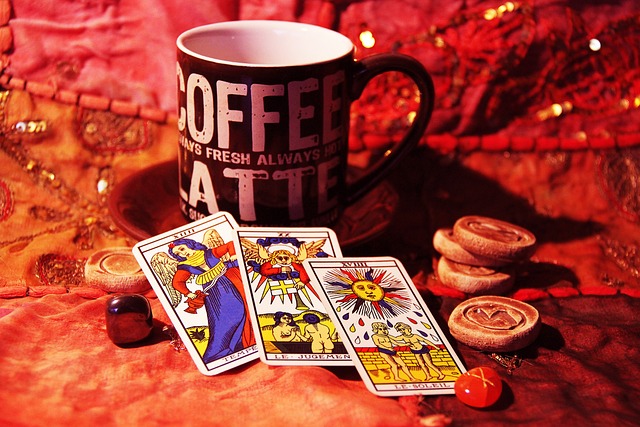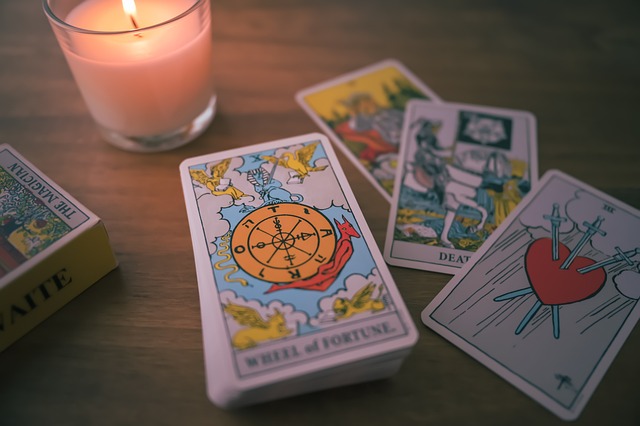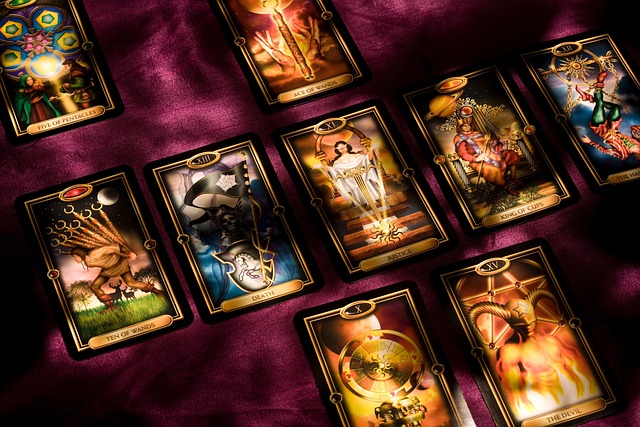Ah, Tarot—those mysterious cards that evoke curiosity, skepticism, and sometimes a bit of side-eye. But why is Tarot so often seen as taboo? And what might the skeptics among us appreciate about it? Let’s dive into the world of Tarot, exploring its allure, the potential pitfalls, and how to embrace it without getting lost in the shuffle.
Tarot and the Taboo: A History of Suspicion
The very mention of Tarot can send some people running for the hills, clutching their pearls and whispering about dark forces. But why all the fuss? The answer lies in a mix of history, religion, and a good old-fashioned fear of the unknown.
A Tangled History:
– Religious Skepticism: Tarot has long been associated with the occult, and anything with even a whiff of mysticism has historically raised eyebrows, especially in more conservative circles. In some religious communities, Tarot is seen as dabbling in forbidden practices, leading to its reputation as something dark or dangerous.
– Misinformation and Stereotypes: Over the years, Tarot has been tangled up with images of gypsies, fortune-tellers, and melodramatic movie scenes. This has led to a lot of misconceptions—some see Tarot as nothing more than a tool for charlatans, while others view it as a gateway to the supernatural. Neither of these is entirely accurate, but they’ve certainly added to Tarot’s taboo status.
What Non-Believers Should Appreciate: Beyond the Woo-Woo

If you’re a skeptic, you might think Tarot is all smoke and mirrors, but hold on a tick! There’s more to these cards than meets the eye, and even the most hardened realist can find something to appreciate.
A Tool for Reflection:
– Self-Reflection and Insight: At its core, Tarot is a tool for introspection. Whether or not you believe in its mystical properties, the images and symbolism on the cards can prompt deep personal reflection. Think of it as a conversation with yourself, guided by the themes and archetypes represented in the deck.
– Creative Thinking:Tarot encourages you to think outside the box. Each card has multiple interpretations, which can help you see situations from different perspectives. It’s like a Rorschach test for your mind—a way to tap into your subconscious and explore your thoughts in a new light.
– Cultural and Artistic Value: Beyond its use as a divination tool, Tarot is a beautiful blend of art and history. Many decks are intricately designed, with each card telling a story through its imagery. Appreciating Tarot can be as simple as admiring the artwork or exploring the rich cultural history behind it.
When Does Tarot Become Unhealthy? The Slippery Slope of Obsession
Like anything, Tarot is best enjoyed in moderation. But when does a healthy interest tip over into an unhealthy obsession?
The Danger of Dependence:
– Seeking Certainty in Uncertainty: Life is full of uncertainties, and it’s tempting to turn to Tarot for answers at every twist and turn. But when you start relying on the cards for every decision—from what to eat for breakfast to whether to quit your job—you’ve ventured into unhealthy territory.
– Avoiding Responsibility: Tarot can become a crutch if you use it to avoid making your own decisions. The cards are meant to guide, not dictate, your life. When you start giving them too much power, you might be dodging the very challenges you need to face head-on.
Signs of Obsession:
– Constant Readings: If you find yourself pulling out the cards multiple times a day for every little issue, it might be time to step back and take a break.
– Anxiety and Fear: If Tarot readings start causing you more stress than comfort, or if you feel anxious without them, it’s a sign that your relationship with Tarot might need some reevaluation.
Embracing Tarot: A Balanced Approach
So, how can you enjoy Tarot without tumbling down the rabbit hole? Here’s a balanced way to embrace the cards, whether you’re a curious newbie or a seasoned reader.
Start with an Open Mind:
– Exploration, Not Expectation: Approach Tarot with a sense of curiosity rather than expectation. You don’t have to believe in magic to find value in the cards. Let them be a tool for reflection and insight, rather than a crystal ball for the future.
Set Boundaries:
– Limit Your Readings: Give yourself some boundaries—maybe one reading a week, or when you’re facing a significant decision. This helps keep the practice in check and prevents it from becoming an obsession.
– Use It as a Complement: See Tarot as one tool in your personal development toolkit, alongside other practices like journaling, meditation, or therapy. It’s a piece of the puzzle, not the whole picture.
Cultural Affection: Who Loves Tarot?

Tarot’s appeal stretches across cultures, with some embracing it more openly than others.
Europe: Tarot has deep roots in European history, particularly in Italy and France, where it first emerged as a card game before taking on its mystical connotations. In these regions, Tarot is often seen as a blend of tradition and mysticism.
Latin America: In many Latin American cultures, Tarot is embraced as part of a broader spiritual and mystical tradition. It’s often used in conjunction with other practices like astrology and numerology.
Modern Western Culture: In recent years, Tarot has seen a resurgence in the West, particularly among younger generations who see it as a tool for personal growth and self-care. It’s less about fortune-telling and more about mindfulness and reflection.
In Conclusion: The Tarot Journey
Whether you’re a believer, a skeptic, or somewhere in between, there’s something to be gained from Tarot—if approached with balance and an open mind. It’s a tool for reflection, a piece of art, and a bit of cultural history all wrapped into one.
So, if you’re curious, why not give it a go? Shuffle the deck, draw a card, and see what insights you might uncover. Just remember, the cards are guides, not dictators. They’re here to prompt thought, not to predict every step. Embrace the mystery, but keep your feet on the ground—and enjoy the journey! For a more indepth look into tarot, check out The Tarot Toolbox



